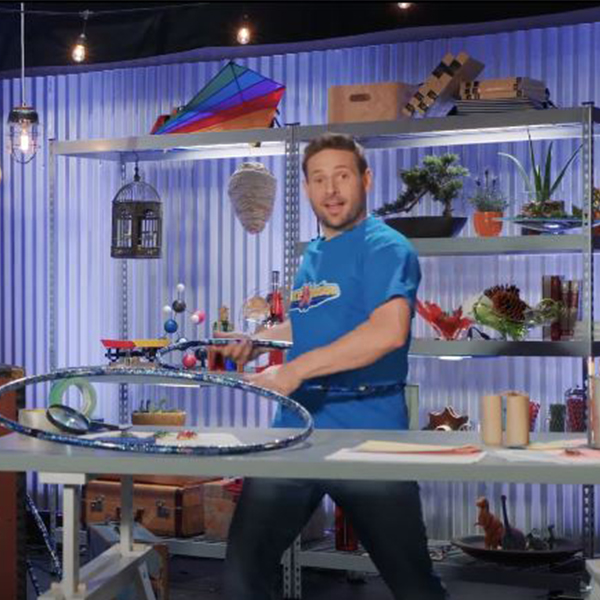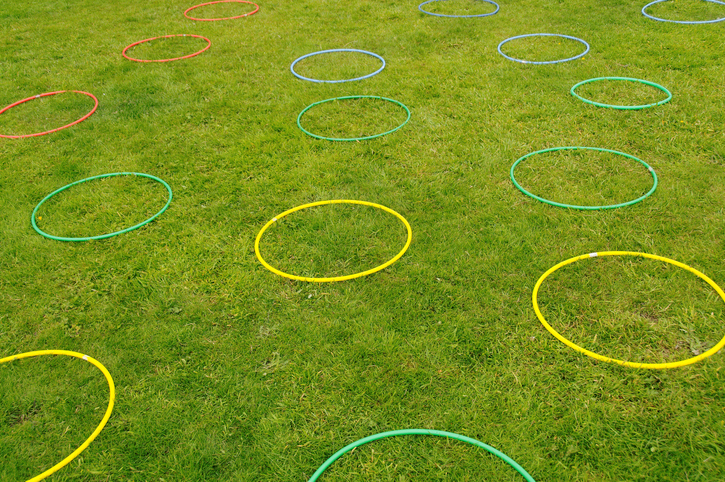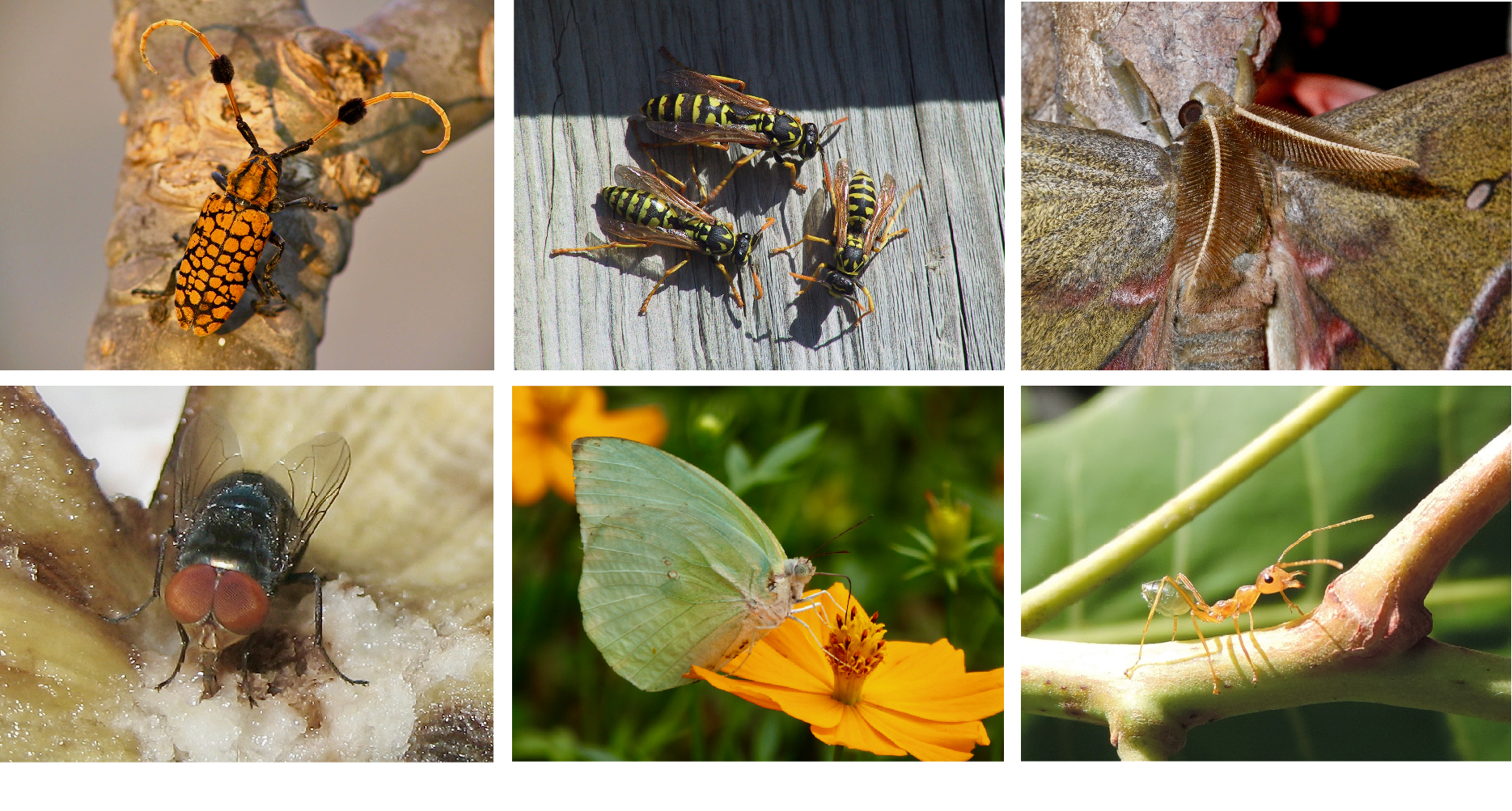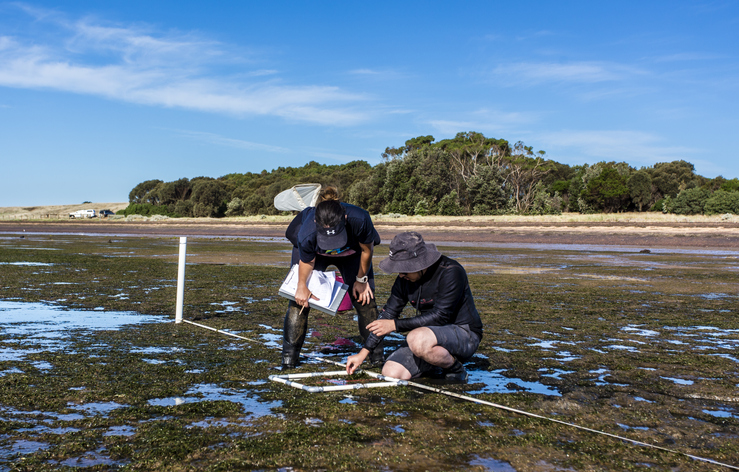ScienceXplosion - The Circle of Life

Eric with hula hoop

Eric with hula hoop
How does this align with my curriculum?
In this episode, Eric uses a hula-hoop to count and catalog all the creatures he finds in that space! Biodiversity represents the variety of living things in any ecosystem - including in your own backyard!
BACK TO THE SCIENCEXPLOSION HOME PAGE
On this episode of ScienceXplosion, Eric uses a hula hoop - but not to show off his moves! He uses a hula hoop to define an area in which he observes and counts all of the living things.
You can do this activity right in your own backyard. By looking closely at a small area, you will realize that there is plenty of life right at your feet.
Did you know?
Biodiversity is the scientific term used to describe the variety of life in an ecosystem.
Now it's your turn! Circle of Life
Have you ever tried to count the number of insects and plants in your school yard or backyard? That would be a lot of living things! It is much easier to count things in a small area than a big area. That is why biologists do not count everything in an entire ecosystem. Instead they choose a few small areas within the ecosystem to observe, identify and count the living things they find. They can then use this number to estimate the total number of living things for the whole ecosystem.
WHAT DO YOU NEED?
- A hula-hoop *if you don’t have a hula hoop you can make your own using a piece of string, a skipping rope, or something similar
- Writing material: pencils and paper, such as a journal
- Optional but useful: a magnifying glass and a camera
- Identification guides: there are many identification guides, websites and mobile apps that can help you identify the plants and animals you observe.
WHAT DO YOU DO?
- Choose an area where you can safely place your hula hoop. You will want to choose a place with lots of living things.
- Draw a map of where your hula hoop is compared to familiar landmarks, such as your house, a fence, etc.
- On the piece of paper, write down the date, time, temperature and weather conditions. Biologists keep track of information like this when they are counting things outdoors.
- Next, look at and count all of the different plants and animals that you see inside the hoola hoop.
- Draw or take pictures of all of the different types of living things that you see. You can use a container (ideally with a white bottom) to take pictures of insects. Be gentle when handling insects so that they are not hurt in the process.
- If you know the names for the plants and animals you find, you can write them on the piece of paper. If you don’t know the name for something, you can use your photographs or sketches to look it up in plant or animal identification guides or apps.
WHAT'S NEXT?
- Once you have counted the total number of plants and animals in your hula hoop, you can repeat the same activity with another location and then compare the results.
- Think about the areas you counted. Why do you think one area has more or less animals or plants than another area?
- How would you count the number of living things living in water?
WHAT’S THE POINT?
A healthy ecosystem usually has many different kinds of plants and animals. However, sometimes these places are impacted by human activities. Biologists often go back and visit the same place in an ecosystem over and over to count the living things. From what they see, they try to figure out if the health of the ecosystem is getting better or worse. Information from these types of counts helps scientists to protect the animal and plant life in an ecosystem.
WHAT ELSE?
Check out these biologist careers that involve such field work:
- Pamela Livingston, Field Biologist
- Diana Chomack, Environmental Planner
Try these other hands-on activities:
- How do animals hide?Have you had difficulties finding critters among the vegetation? Try this activity to better understand animal camouflage.
- How do I construct a terrarium? After looking at an outside ecosystem, try building your own!
With over 20 years experience, GAPC Entertainment’s team creates stories with power, creativity and reach. GAPC Entertainment is a vibrant Canadian production company with a passion for creating quality programming for national and international audiences on all platforms.
GAPC Entertainment produces creative, diverse, and compelling content across most genres, including performing arts, biopics, science, history, drama, and award-winning children’s educational programs.



